Nucleons
This page covers the proton and neutron schemes according to the "Wave Model" described previously. A scenario of the creation of these nucleons is proposed.
NucleonsPart 3
Spacetime Model |
NucleonsThis page covers the proton and neutron schemes according to the "Wave Model" described previously. A scenario of the creation of these nucleons is proposed. ProtonsThe "Wave Model" suggests that the (u u d) structure of the proton should be replaced by the (u u u electron) scheme shown in the following figure.
When the proton is created, the electron leaves the d quark. It then surrounds the three u quarks and keeps them locked up. The electron acts as a rubber band: the more one moves away from the centre, the stronger the force becomes (see below the section concerning the "Asymptotic Freedom"). Examination of some interactions and logical deductions let's suppose that the d quark is built during the interaction with an u quark and an electron. Note : The main objection comes from the spin violation. However, this is no longer a valid objection (please see Part 4 of the Spacetime Model). 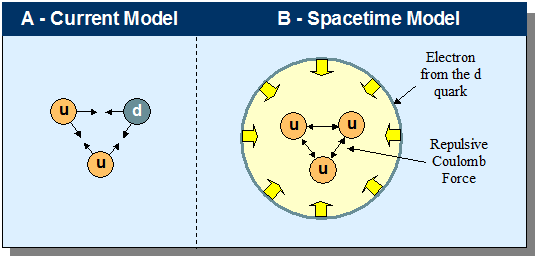 NeutronsThe neutron is a proton surrounded by an electron. Please note that the spin is no longer a valid objection (the Part 4 of the Spacetime Model explains why). This electron has two effects:
The sCells kept closed between the two electrons surrounding become closed volumes and get mass, as explained in Part 1: mass and gravity). 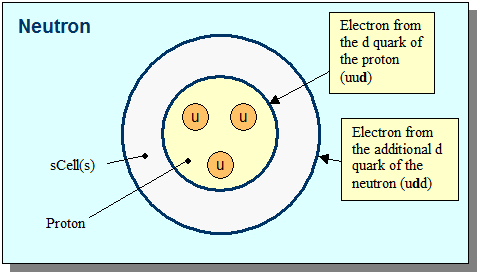 CONFIRMATION: As we could expect from experimentation, Confirmation by ExperimentationThe curve of the following figure confirms our "Wave Model". The neutron is neutral only at 1.5 to 2 x 10-15 m.. A negative charge appears at a distance of 0.5 fermi. No one can give a rational explanation of this phenomenon. The Spacetime Model provides a very simple explanation of this enigma. The negative charge comes from the electron surrounding the proton to make up a neutron, as the previous figure shows. Therefore, this well known experimentation shows with evidence that:
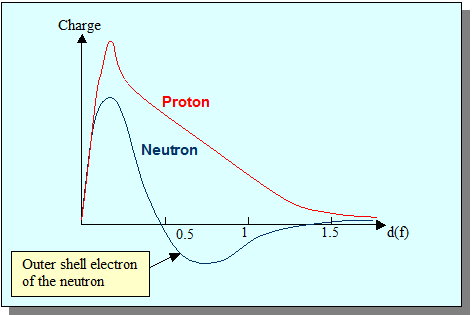 Direct proton creationThe scenario of the creation of protons at the very first moments of the universe is described in the following figure. It is more probable than other scenarios because it is simpler. It should be noted that the creation of protons is immediate and only requires one phase. It was pointed out earlier that the universe, at the time of its creation, was necessarily very simple. By no means is this an assumption or a conjecture. It is a necessity. Any phenomenon during its creation, whatever it is, is necessarily very simple too. The simplest is the best. This is why this scheme is much more probable than the traditional Big-Bang that creates the 24 particles of the Standard Model in only one step. 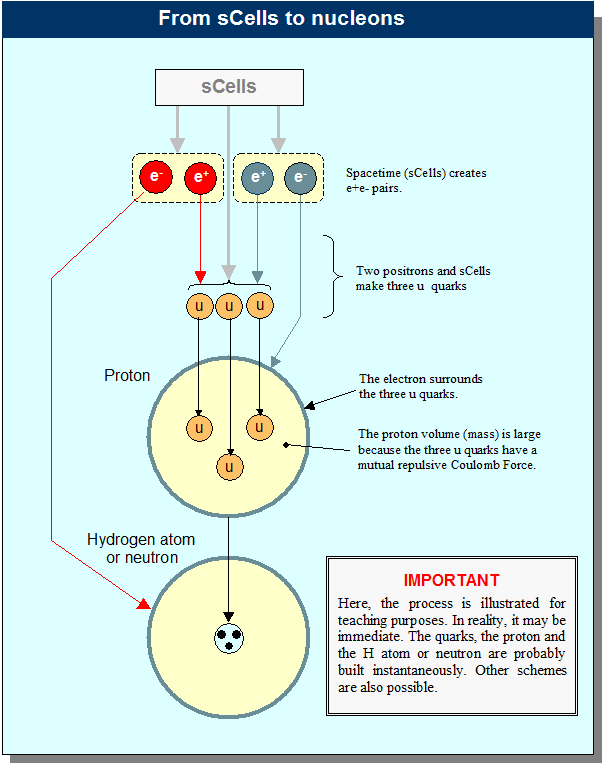 Asymptotic freedomThe "asymptotic freedom" discovered by David Gross, Frank Wilczek and David Politzer (Nobel Prize 2004) states that, contrary to the other forces whose intensity decreases with the distance from interaction, the strong nuclear force increases with it. Thus, the quarks are practically free at short distance, but are prone to a very strong force, which ties them together when they move away from each other. Very often, physicists use the image of a rubber band to explain this asymptotic freedom: the more we move away from the centre of the rubber band, the more intense is the recall force. That is exactly what the electron does (see the proton in the above figure). Like a rubber band, it surrounds the three u quarks and prevents them from moving away from each other. Note: One of the major successes of this model is to explain perfectly the enigma of antimatter in the universe. It also means that the strong nuclear force does not exist per se. Instead, the electron, which acts as a rubber band, produces a kind of Hooke Force, i.e. an elastic force. This conclusion is nothing but the logical connection between the Author's "Wave Model" and the asymptotic freedom theory. Hydrogen atom (proposal)It appears that the neutron and the hydrogen atom have the same principle of construction. In both cases, an electron surrounds a proton, in accordance with the "Wave Model". It seems that probably the Do (neutral delta) and other particles follow an identical scheme. However, in some cases such as p mesons, the proton may be replaced by another particle. 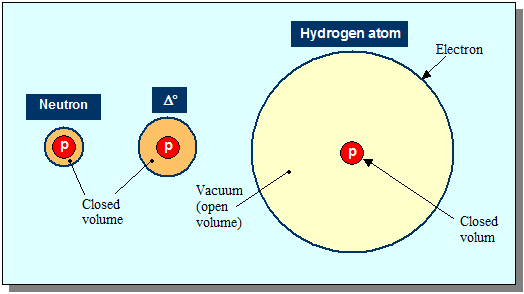 The charge is null in all cases. The only difference is the mass (see the Part 1). In the neutron and Do, the electron creates a closed volume, with mass. In the hydrogen atom, it creates an open volume, i.e. a massless volume, since its orbital is much larger and therefore is "porous" to spacetime. Nature's favouring of the neutron or the hydrogen atom may be a simple fact of proximity and energy. When the proton is met, if the electron-wave is large, a hydrogen atom may be created. If the electron-wave is small, a neutron may be created. NOTE: Information in this paragraph needs verification and must be considered with great care. Equality of the charge of the protonThe mystery of the charge of the proton has already been discussed. The "Wave Model" explains this enigma with great simplicity:
In this way, it seems logical that the proton charge, +1, would be equal to the electron charge in absolute value since it comes from the excess positron. AntineutronsExperimenters try to detect spontaneous transformation from neutrons to antineutrons. It is theoretically possible if energy allows it. The following figure explains this interaction:
If we take into account the quarks and antiquarks decomposition in electrons and positrons, we can say: 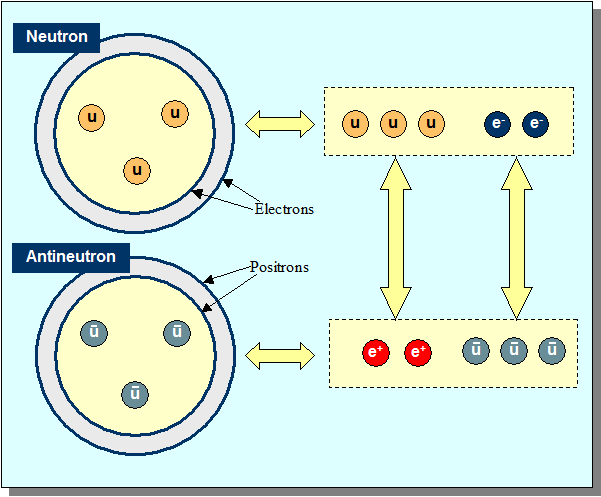 |